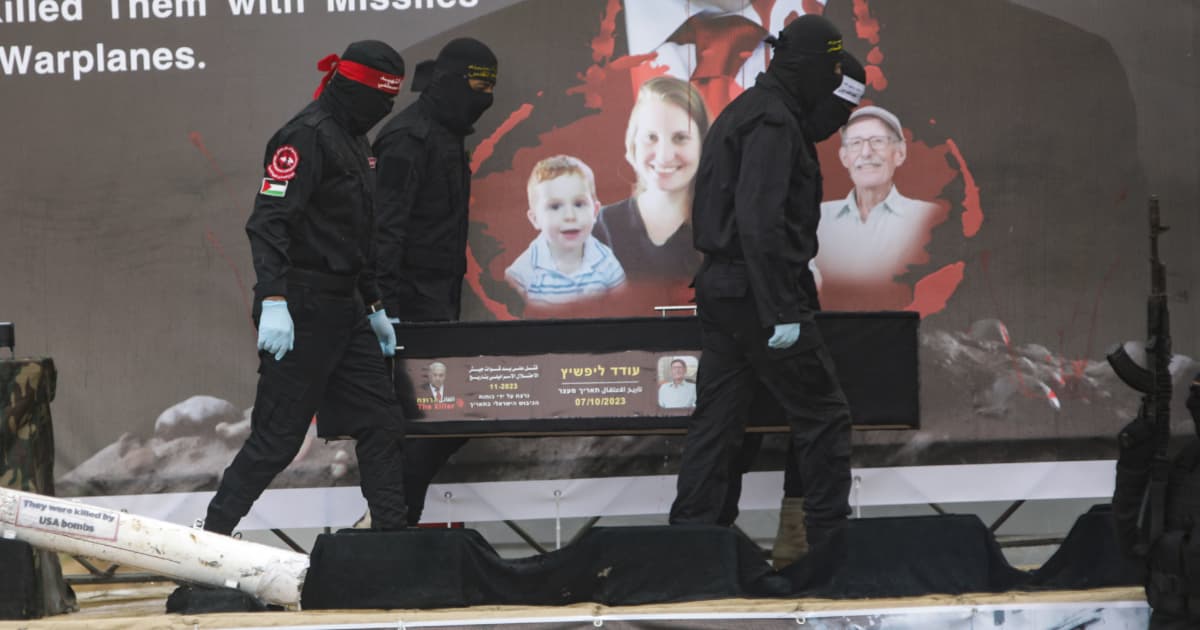One is Hisham al-Sayed, a Bedouin, and he turned 36 this year; the other is Avera Mengistu, 39, Ethiopian. Both are civilians, having never served as soldiers or informants for the IDF. This is not said by the Jewish state, but by Human Rights Watch, which in a 2017 report established that both suffered from mental illness. Yet, Hamas captured them and held them prisoner for ten years, as they still represented, in the eyes of the Islamists, a"bargaining chip." The story of Hisham and Avera is useful for understanding what is happening these days, with the truce hanging by a thread and on the condition that Hamas return the bodies of those it forcibly took away during the massacre of 7 October 2023.
It's difficult to establish with certainty whether yesterday's act, with the handing over to the Jewish state of the human remains of a hostage already in Israel, was a deliberate move or a gross mistake. What can be verified, based on data and history, is how Hamas has always viewed hostages as an advantage to be exploited: for one of them, it is demanding 100, 200, or even 1,000 Palestinians.
Mengistu was born in Ethiopia. He later moved to Ashkelon, the Jewish state. In September 2014, he crossed a barbed wire fence on foot, entering Gaza from the beach. Sayed, a Bedouin with Israeli citizenship, did the same the following year, entering Gaza on foot in April 2015. Palestinian militants locked them in cages, claiming they were IDF soldiers. Human Rights Watch denied this, writing in a 2017 report that neither man had any ties to Israeli intelligence agencies or the army. According to the NGO, both were accustomed to walking long distances and suffered from mental illnesses.
For years, nothing was heard of them. Their families were devastated by grief. Then, in June 2022, Hamas released a video of Sayed in bed, wearing an oxygen mask; in January 2023, the video of Mengistu was shown. The massacre of October 7, 2023, was still far away. The videos were intended to put pressure on Israel and initiate negotiations for an exchange with Palestinian prisoners. This included the human remains of two Israeli soldiers killed in the 2014 war; their remains had never been returned.
The turning point for Sayed and Mengistu came in February of this year: both were freed by militants in the first truce with Israel – complete with a show in the streets of Gaza – in exchange for dozens of prisoners. As for the soldiers, the remains of one of them, Oron Shaul, were recovered in Gaza during an operation led by IDF special forces and the Shin Bet. On Israeli public radio, Sayed's father, while happy for his son's return, said:"Why did they hold onto a person like this, who has done nothing wrong? He is a man of peace, a man who wanted to reach Gaza, he loves Gaza, he did not go there as an aggressor." Sayed was not a soldier, but he had nevertheless become a hostage, and he was held in the tunnels until his release could bring about an advantage. Moreover, in Israel, even before October 7, it was enough to recall the story of Gilad Shalit to raise concern: a soldier captured on June 25, 2006 by Hamas during a raid and released in October 2011, after more than five years, receiving 1,027 Palestinians.

